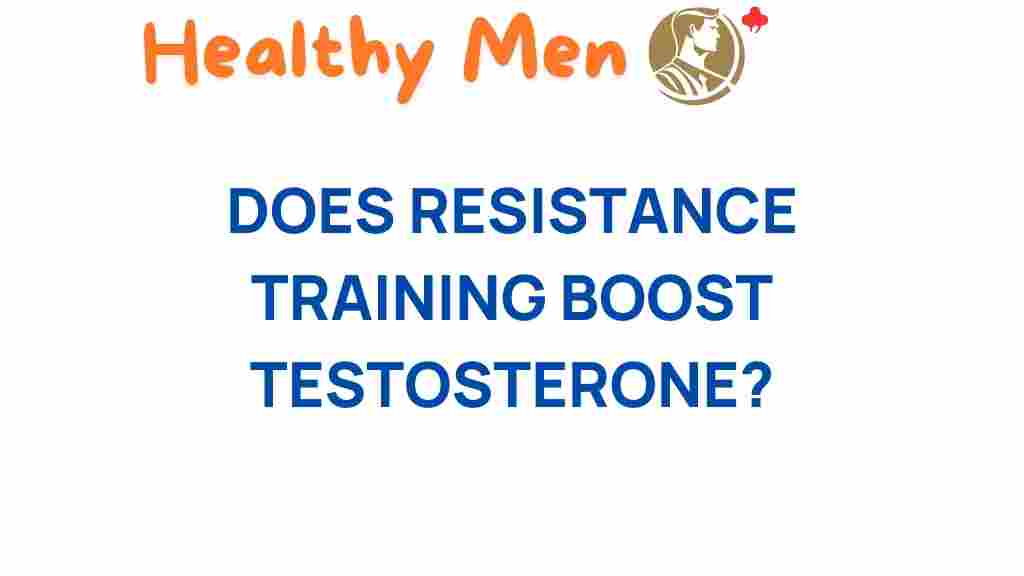Unveiling the Truth: Does Resistance Training Boost Testosterone?
In the realm of fitness and health, the relationship between resistance training and testosterone levels has garnered significant attention. Many fitness enthusiasts believe that engaging in resistance training can enhance testosterone production, thereby contributing to improved muscle growth, strength, and overall physical performance. But how true is this belief? In this article, we will explore the intricate connection between resistance training and testosterone, shedding light on the role of exercise in hormone regulation and its impact on health and performance.
Understanding Testosterone and Its Importance
Testosterone is a vital hormone primarily associated with male health, although it is present in females as well. It plays a crucial role in several bodily functions, including:
- Muscle growth and strength development
- Bone density maintenance
- Fat distribution regulation
- Red blood cell production
- Sexual function and libido
Low testosterone levels can lead to various health issues such as reduced muscle mass, increased body fat, fatigue, and decreased libido. Therefore, understanding how to maintain or boost testosterone levels is essential for overall fitness and health.
The Role of Resistance Training
Resistance training, often referred to as strength training or weight lifting, involves exercises that improve muscle strength and endurance. It includes various forms of exercise, such as:
- Weight lifting
- Bodyweight exercises (push-ups, pull-ups)
- Resistance band workouts
- High-intensity interval training (HIIT) with resistance
One of the primary benefits of resistance training is its potential to influence hormone levels, including testosterone. Numerous studies have indicated that engaging in regular strength training can lead to short-term spikes in testosterone levels, particularly after intense workouts.
The Science Behind Resistance Training and Testosterone
Research has shown a positive correlation between resistance training and increased testosterone levels. Here are some key findings:
- Acute Responses: Several studies report that resistance training can cause an immediate increase in testosterone levels. This spike is typically temporary, lasting for a few hours post-exercise.
- Long-Term Adaptations: Regular resistance training may lead to long-term increases in baseline testosterone levels, particularly in individuals who are initially sedentary.
- Type of Exercise Matters: Compound movements (e.g., squats, deadlifts) that engage multiple muscle groups tend to elicit a more significant hormonal response than isolation exercises (e.g., bicep curls).
It is essential to note that while resistance training can boost testosterone levels, the extent of this effect can vary based on several factors, including age, sex, fitness level, and the intensity of the training.
How to Optimize Resistance Training for Testosterone Boost
To maximize the benefits of resistance training on testosterone levels, consider the following steps:
1. Focus on Compound Movements
Incorporate exercises that work for multiple muscle groups. These include:
- Squats
- Deadlifts
- Bench presses
- Rows
2. Increase Training Intensity
Higher intensity workouts (lifting heavier weights) can lead to greater hormonal responses. Aim for:
- 3-5 sets of 6-12 repetitions
- Short rest periods (30-90 seconds) between sets
3. Incorporate Progressive Overload
Gradually increase the weights you lift or the volume of your workouts over time. This can stimulate muscle growth and further enhance testosterone levels.
4. Maintain a Balanced Diet
Nutrition plays a crucial role in hormone production. A diet rich in:
- Healthy fats (avocados, nuts, olive oil)
- Lean proteins (chicken, fish, legumes)
- Complex carbohydrates (whole grains, vegetables)
can support optimal testosterone levels.
5. Ensure Adequate Recovery
Rest and recovery are vital for hormone regulation. Aim for:
- 7-9 hours of quality sleep per night
- Rest days between intense workouts
Potential Troubleshooting Tips
While resistance training can positively influence testosterone levels, some individuals may not experience significant changes. Here are a few troubleshooting tips:
1. Evaluate Your Workout Routine
Ensure that your routine includes a variety of compound exercises and challenges your muscles adequately. If you find yourself plateauing, consider altering your routine or increasing intensity.
2. Assess Your Diet
Dietary deficiencies can hinder testosterone production. Ensure you’re getting adequate vitamins and minerals, especially:
- Vitamin D
- Zinc
- Magnesium
3. Manage Stress Levels
Chronic stress can elevate cortisol levels, which negatively impacts testosterone. Engage in stress-reducing activities such as:
- Meditation
- Yoga
- Deep breathing exercises
4. Consult a Healthcare Professional
If you suspect low testosterone levels despite a healthy lifestyle, consult a healthcare provider for testing and personalized advice.
Conclusion: The Takeaway
In conclusion, resistance training indeed has the potential to boost testosterone levels, contributing to enhanced muscle growth, strength, and overall performance. By focusing on compound movements, increasing training intensity, and ensuring proper nutrition and recovery, individuals can optimize their workouts to positively influence their hormonal health.
Remember that while resistance training can provide significant benefits, it is just one aspect of a holistic approach to fitness and health. Regular physical activity, a balanced diet, adequate rest, and stress management are all essential components of achieving optimal hormone levels and overall well-being.
For more information on how to enhance your fitness journey, visit our fitness resource page. Additionally, you can explore external insights on hormone health through reputable health websites.
This article is in the category Fitness and created by healthymen Team
